#cultural third gender
Text
In addition to my Monkey Man post from earlier, the always kind & sweet Aparna Verma (author of The Phoenix King, check it out) asked that I do a thread on Hijras, & more of the history around them, South Asia, mythology (because that's my thing), & the positive inclusion of them in Monkey Man which I brought up in my gushing review.
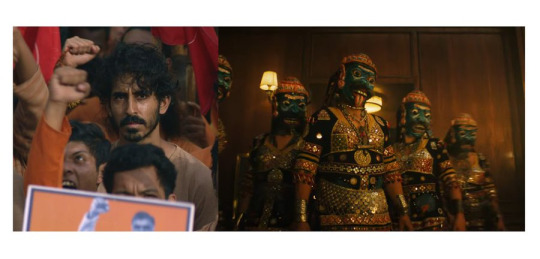
Hijra: They are the transgender, eunuch, or intersex people in India who are officially recognized as the third sex throughout most countries in the Indian subcontinent. The trans community and history in India goes back a long way as being documented and officially recognized - far back as 12th century under the Delhi Sultanate in government records, and further back in our stories in Hinduism. The word itself is a Hindi word that's been roughly translated into English as "eunuch" commonly but it's not exactly accurate.
Hijras have been considered the third sex back in our ancient stories, and by 2014 got official recognition to identify as the third gender (neither male or female) legally. Pakistan, Nepal, Bangladesh, and India have accepted: eunuch, trans, intersex people & granted them the proper identification options on passports and other government official documents.
But let's get into some of the history surrounding the Hijra community (which for the longest time has been nomadic, and a part of India's long, rich, and sometimes, sadly, troubled history of nomadic tribes/people who have suffered a lot over the ages. Hijras and intersex people are mentioned as far back as in the Kama Sutra, as well as in the early writings of Manu Smriti in the 1st century CE (Common Era), specifically said that a third sex can exist if possessing equal male and female seed.
This concept of balancing male/female energies, seed, and halves is seen in two places in South Asian mythos/culture and connected to the Hijra history.
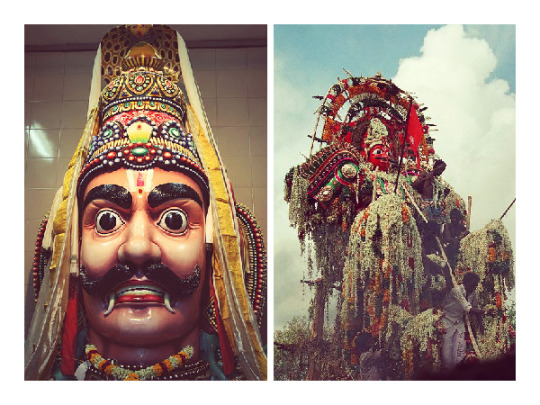
First, we have Aravan/Iravan (romanized) - who is also the patron deity of the transgender community. He is most commonly seen as a minor/village deity and is depicted in the Indian epic Mahabharata. Aravan is portrayed as having a heroic in the story and his self-sacrifice to the goddess Kali earns him a boon.

He requests to be married before his death. But because he is doomed to die so shortly after marriage, no one wants to marry him.
No one except Krishna, who adopts his female form Mohini (one of the legendary temptresses in mythology I've written about before) and marries him. It is through this union of male, and male presenting as female in the female form of Mohini that the seed of the Hijras is said to begun, and why the transgender community often worships Aravan and, another name for the community is Aravani - of/from Aravan.
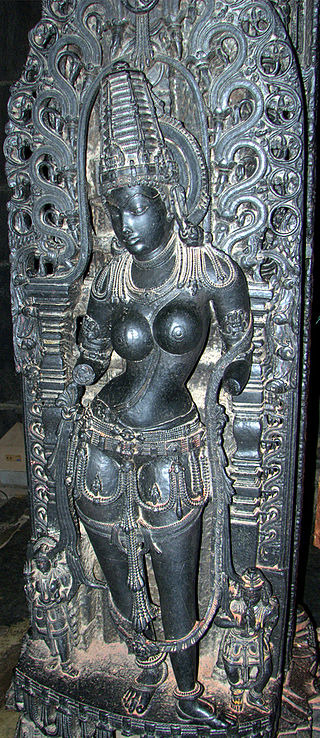
But that's not the only place where a gender non conforming divine representation can be seen. Ardhanarishvara is the half female form of lord Shiva, the destroyer god.
Shiva combines with his consort Parvarti and creates a form that represents the balancing/union between male/female energies and physically as a perfectly split down the middle half-male half-female being. This duality in nature has long been part of South Asian culture, spiritual and philosophical beliefs, and it must be noted the sexuality/gender has often been displayed as fluid in South Asian epics and the stories. It's nothing new.

Many celestial or cosmic level beings have expressed this, and defied modern western limiting beliefs on the ideas of these themes/possibilities/forms of existence.
Ardhanarishvara signifies "totality that lies beyond duality", "bi-unity of male and female in God" and "the bisexuality and therefore the non-duality" of the Supreme Being.
Back to the Hijra community.
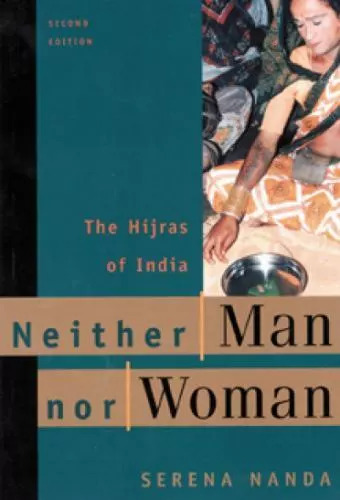
They have a complex and long history. Throughout time, and as commented on in the movie, Monkey Man, the Hijra community has faced ostracization, but also been incorporated into mainstream society there. During the time of the Dehli Sultanate and then later the Mughal Empire, Hijras actually served in the military and as military commanders in some records, they were also servants for wealthy households, manual laborers, political guardians, and it was seen as wise to put women under the protection of Hijras -- they often specifically served as the bodyguards and overseers of harems. A princess might be appointed a Hijra warrior to guard her.

But by the time of British colonialism, anti-Hijra laws began to come in place folded into laws against the many nomadic tribes of India (also shown in part in Monkey Man with Kid (portrayed by Dev Patel) and his family, who are possibly
one of those nomadic tribes that participated in early theater - sadly by caste often treated horribly and relegated to only the performing arts to make money (this is a guess based on the village play they were performing as no other details were given about his family).
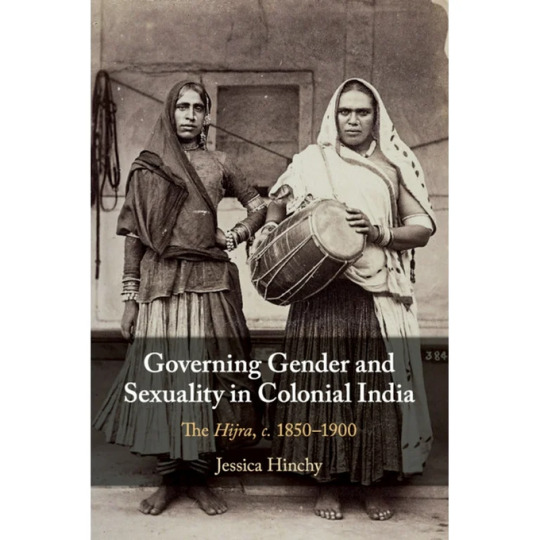
Hijras were criminalized in 1861 by the Indian Penal Code enforced by the British and were labeled specifically as "The Hijra Problem" -- leading to an anti-Hijra campaign across the subcontinent with following laws being enacted: punishing the practices of the Hijra community, and outlawing castration (something many Hijra did to themselves). Though, it should be noted many of the laws were rarely enforced by local Indian officials/officers. But, the British made a point to further the laws against them by later adding the Criminal Tribes Act in 1871, which targeted the Hijra community along with the other nomadic Indian tribes - it subjected them to registration, tracking/monitoring, stripping them of children, and their ability to sequester themselves in their nomadic lifestyle away from the British Colonial Rule.
Today, things have changed and Hijras are being seen once again in a more positive light (though not always and this is something Monkey Man balances by what's happened to the community in a few scenes, and the heroic return/scene with Dev and his warriors). All-hijra communities exist and sort of mirror the western concept of "found families" where they are safe haven/welcoming place trans folks and those identifying as intersex.
These communities also have their own secret language known as Hijra Farsi, which is loosely based on Hindi, but consists of a unique vocabulary of at least 1,000 words.
As noted above, in 2014, the trans community received more legal rights.
Specifically: In April 2014, Justice K. S. Radhakrishnan declared transgender to be the third gender in Indian law in National Legal Services Authority v. Union of India.
Hijras, Eunuchs, apart from binary gender, be treated as "third gender" for the purpose of safeguarding their rights under Part III of our Constitution and the laws made by the Parliament and the State Legislature. Transgender persons' right to decide their self-identified gender is also upheld and the Centre and State Governments are directed to grant legal recognition of their gender identity such as male, female or as third gender.
I've included some screenshots of (some, not all, and certainly not the only/definitive reads) books people can check out about SOME of the history. Not all again. This goes back ages and even our celestial beings/creatures have/do display gender non conforming ways.
There are also films that touch on Hijra history and life. But in regards to Monkey Man, which is what started this thread particularly and being asked to comment - it is a film that positively portrayed India's third sex and normalized it in its depiction. Kid the protagonist encounters a found family of Hijras at one point in the story (no spoilers for plot) and his interactions/acceptance, living with them is just normal. There's no explaining, justifying, anything to/for the audience. It simply is. And, it's a beautiful arc of the story of Kid finding himself in their care/company.
#hijra#trans representation#monkey man#dev patel#transgender#trans rights#trans rights are human rights#third sex#indian history#indian culture#colonialism#imperialism#south Asian mythos#South Asian myths#Aravan#Iravan#Mahabharata#hindu mythology#hindu gods#kali goddess#krishna#hindu mythology art#Ardhanarishvara#Shiva#Parvarti#sexuality#gender fluid#fluid sexuality#trans community#transgender rights
273 notes
·
View notes
Text
controversial opinion about incredibly niche subjects, but i actually like the use of the universal ‘he’ in the narration of Left Hand of Darkness. I like it for the same reason that everyone hates it, and Ursula Le Guin herself regretted it: because it doesn’t fit.
The book is ostensibly written and translated by Genly, or by the observers that came to Gethen before him, and the central struggle of Genly’s story is his inability to give up the gendered frameworks he’s used to in the face of a situation where they don’t apply at all. Having that baked into the language indicates just how deep that struggle runs. In order for him to understand Gethen, to connect to Estraven--hell, to understand himself--he needs to give up on this idea of gender that is so fundamental to his cultural background that it’s baked into his language, and that’s just as much of a barrier to true connection as Estraven’s memories of Arek are to their use of mindspeech. Having that reflected in the text itself, and showing Genly struggle with it as he writes, is actually a super effective way to not only show this tension, but also draw further attention to the limits of Le Guin’s English-speaking audience.
#lhod#the left hand of darkness#genly ai#i just think it's more effective for building tension and character voice#than it would have been if genly was using a third-gender pronoun the whole time#singular they... maybe#but a genly who is able to adapt a new pronoun from the get go is a different genly than the one we see in the text#the only counter argument i would buy is that genly's writing in retrospective#and by the end of the book has finally (too late) come to understand the limitations of gender#but idk#i like genly because he's a guy who creates problems#not on his own but as a reflection of the culture he comes from#and i think that the fact that there's an inherent contradiction to how the text is presented to us#is a good problem actually#mine#for the three people out there who will care about this
2K notes
·
View notes
Text
Being cis and trans is the same. Stupid language tbh. Gender in general... not real. But people dont wanna take that to the logical conclusion because nuance of something being fake and also having an impact on the real world thru the play pretend of the theatre of society is too annoying to think about. What does it mean to be straight or gay if gender is made up. Instead of realising that living outside of the gender binary lays bare the stupidity of some inherent gender essence people presume when they say "man" we've just decided that theres so little of us that exception proves the rule. But everyone in the world is nothing at all till they step inside of the mirror labyrynth of society that reflects gender back at them.
#barking#theres nonbinary people out there fighting tooth and nail to be considered a third “real” gender#im aware that it os politically useful... but we are building our culture on rotted foundation... lets start from a real place...#btw im sick as fuck and ive got a fever
22 notes
·
View notes
Text
Random Fact #6,493
"The god of Christians, Jews, and Muslims made only two genders" is not a sound claim even if we were to assume for the sake of argument that God exists and created genders.
Israelite society had several genders, not just two.
Ay’lonit [איילונית]
A person who is identified as “woman” at birth but develops “man” characteristics at puberty and is infertile.
There are 80 references to this gender in the Mishna and Talmud and 40 in the classical midrash and Jewish law codes.
Androgynos [אנדרוגינוס] (Ancient Israel, from at least 1st century CE to 16th century CE)
A person who has both “male” and “female” sexual characteristics.
There are 149 references to the gender in the Mishna and Talmud and a whopping 350 mentions in classical midrash and Jewish law codes.
Saris [סריס:] (Ancient Israel)
A person who is identified as a “man” at birth but develops “woman” characteristics at puberty and/or is lacking a penis.
A saris can be “naturally” a saris (saris hamah), or become one through human intervention (saris adam).
There are 156 references to this gender in mishna and the Talmud and 379 in classical midrash and Jewish law codes.
Tumtum [טומטום] (Ancient Israel)
A person whose sexual characteristics are indeterminate or obscured.
According to Maimonides’ Mishneh Torah, Mada, Avoda Zara, 12, 4 Tumtum is not a separate gender exactly, but rather a state of doubt about what gender a person is (kind of like a Schrödinger’s gender?).
#did you know#christianity#judaism#islam#random facts#random fact#little known fact#random factoid#random factoids#yes really#history facts#israelites#third genders#trans history#intersex history#lgbt history#religion#transgender#jewish culture#jewish history#abrahamic religions#god of abraham#god of israel#gender stuff#queer history
110 notes
·
View notes
Text
excerpting
Domestic Diplomacy II is turning out to be even more "splickedy gratuitously gets caught in the weeds of xenosociology and alien language barriers, the fic sequel" and tbh I'm not mad about it
--
“Oh, your moirail!” says Jade, and bounces upright, ignoring John’s wary little soft human cautionary hiss. To your vague surprise, she’s apparently learned enough not to do the human holding-out-a-hand gesture they usually do when they’re introduced; she clasps her hands in front of her, nonexistent claws politely folded in, and ducks her head briefly forward and to one side, careful not to jab at him with her nonexistent horns.
It's a pretty passable greeting—for a social equal, which is its own bizarre issue, considering he’s a highblood. But relatively non-offensive, for a human, and fortunately for her she’s picked a highblood who isn’t likely to give a shit. Gamzee laughs out loud and gives his own lazy-ass version of a greeting back, a vague twist of his wrists and dip of his head, condescending to use an equal’s greeting back at her. When he says “Gamzee Makara,” there’s a hint of a threatening buzz to it, a testing you should know to respect me warning—you could have told him she’d show absolutely no sign of hearing it, which is exactly what happens.
“I’m Jade Harley! I meet you,” Jade says, a carefully neutral statement-of-fact greeting—not fawning or hostile. You don’t know if humans are out here just learning neutral address no matter what, or if this human particularly just doesn’t give a shit that your moirail’s a fuck-off mutant-huge highblood with horns that scrape the ceiling of the block—by the expectant way she looks up at Gamzee afterward, she wouldn’t give much of a shit either way. Out of all of the humans, Jade Harley might actually win the prize for giving the least shits, no matter what Rose and Dave like to pretend.
“Yeah, I meet you too, motherfucker,” says Gamzee, looking incredibly amused, and glances down at you. “She’s a rude-ass little motherfuckin’ toothful, huh? I like her.”
“Of course you do,” you say, pained. “Don’t take it personally, alright? You’re not a highblood here, they don’t get highbloods.”
“Oh, best friend,” says Gamzee, and kisses your nugbone again, embarrassingly. “I’m a highblood wherever the fuck I go. It’s cool though. Squishy-ass little motherfuckers won’t get any grief from me.”
“<Motherfucker>,” Jade repeats behind you, and switches back to English, in the bright, wide verbal tone you’re starting to learn means ‘smiling and happy’, weird interstitial ‘vowel’ breath-sounds further back in the throat through pulled-back mouth-corners. “Hmm, <motherfucker>… Oh, neat! Is that dialect? It sounds like, ahh, what’s that other word. Kk—kkkht— Uh, dammit. You guys need to learn how to use vowels— It sounds like <;brother>.”
“It is like,” you say, surprised despite yourself. “<Brother> is a troll, and <motherfucker> you put it all spots you want. It’s a thing, it’s a troll, it’s a, tss, a doing-things word, it’s a name. It’s bad, it’s good. Any spot you want. And he does want, for all those, all the time.”
#splickedydrabbles#Homestuck#Domestic Diplomacy#me staring into the distance: what if 'motherfucker' and 'brother' are translated different but they're related words in alternian....#what if 'brother' and 'sister' aren't different words theyre just translated in english based on gender but there's no distinction actually#it's all the word I tend to translate as 'kin'/'family'/'fam' lol but gendered by english-speakers for comprehension#what if alternian greetings have implicit settings for 'i'm hostile to you' and 'i'm trying to be non-offensive and polite'#and the lack of either is an implicit message of 'we're equals' which comes with its own social baggage RE: castes#what if I approached Homestuck as though it was implicitly a translated text ala JRR Tolkein's meta-narrative of Lord of the Rings#''Alternian wouldn't spell his name 'karkat vantas' of course but it's been anglicized for the audience with additional vowel sounds''#'when his tone of voice is referenced in this line it of course actually refers to his engagement of his third subvocal chatterbox--''#WHAT IF--#I am frothing at the damn mouth I love fucking around in this sandbox so much I will make up ALL the societal/cultural indicators#this is the casual/semi-formal/court-formal code-switching in Save a Horse Ride a Dragon all over again lmao NO REGERTS
129 notes
·
View notes
Text
Shrek is woke because every main villain was a white person in a position of power who weaponized the status quo or tried to erase marginalized groups in some way.
#shrek#shrek 2#shrek the third#shrek the third rewrite#shrek forever after#dreamworks#how my oc villain Bruce works is he embodies toxic masculinity and tries to make Charming into a badass warrior (it fails)#meanwhile Rapunzel is toxic feminitity; how rich white people use class & gender roles to punish those who stray from them#gwynn and rhodanthe being two black girls they struggle with their identity & how they can never fit White Ideals#but thats okay bc they learn to embrace their culture/traits & become better people for them#meanwhile Rapunzel loses all her friendships (&hair) chasing after a guy who doesnt see her as a person#and Bruce loses EVERYTHING bc his son ends up thinking for himself and who he wants to be: a hair stylist
55 notes
·
View notes
Text
SICK of academics saying shit like "non-binary is a step backwards people are just creating a third gender category while we should be working towards eradicating the differences and inequalities between men and women entirely" that is LITERALLY what we're doing here. the eradication of gender as a social construct isn't going to happen in a day and it's not going to happen without people taking action and saying "gender is fluid and my expression is whatever i want it to be, im purposefully disregarding the binary and challenging traditional beliefs to change people's ways of thinking abt gender". we are in the trenches and y'all refuse to see it. "most people don't feel fully man or woman that'd make us all non-binary" yes that's the point the binary doesn't exist and we're actively trying to deconstruct it. and we're going to keep being non-binary until the work is done
#idk man i always feel like bc most of these people are 60+ they're kind of. out of touch with young vibrant queer communities#and the cultures and mindsets and the way concepts are taken up and articulated and given a new shape#ive never heard a nb person saying they're a third category i think we just think of ourselves as being. beyond that#and of course we mix and match traditionally 'male' and 'female' things. that's the building blocks we have#but by doing so we're trying to make them lose the 'inherent' gendered quality.#also is calling it a third category not a sign you are still thinking in the binary. bc you can't conceive of gender as wholly fluid#idk i can't prove it but i feel like it's mostly old school feminists who i see saying this stuff#not saying feminism is bad ofc. but like. they have a certain way of thinking rooted in their own bg and experience#i feel like they tend to cast non-binarism as a force working against feminist movements. WHILE IT'S NOT.#curry rambles
86 notes
·
View notes
Text
being mspec doesn’t always mean you like all genders!!! all it means is that you like more than one gender. you could be mspec and like women and non-binary people. some of y’all treat non-binary people like women-lite or men-lite and it shows
#people who think that all mspec lesbians like men are really telling on themselves#I bet they think that there’s only two genders#and btw#most mspec lesbians like women and non-binary genders#not necessarily men#‘but non-binary isn’t a third gender’ yet for some non-binary people it is#you also have to take into account cultural genders#yes non-binary people are included in every sexuality#stop treating non-binary people like women lite or men lite#mspec#non-binary#mspec lesbian#mspec gay
98 notes
·
View notes
Text


I made this to empower myself :)))))
[ID: Two psychedelic neon rainbow swirls with first white, then black text, each reading, "Embrace cripple punk". End ID.]

#eye strain#crippled#physically disabled#disabled aroace#cane user#mobility aid#disabled natives#indigenous#third gender#cultural gender#two spirit#gela’#CHamoru#Guam#Guam Native#Chinese#China#Pachamama#Pachamama Native#Afrika#Afrikan Descendant#Turtle Island Native#palao’an#låhi#mamflorita#malalåhi#dos espiritus
20 notes
·
View notes
Photo
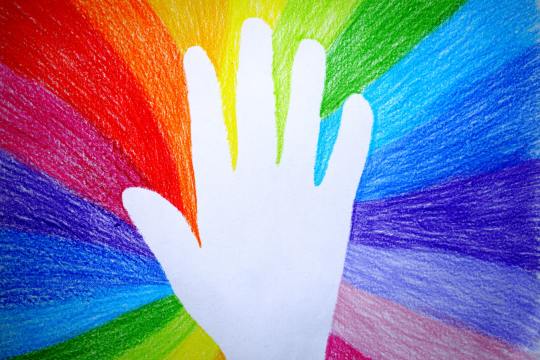


(via Embodying Sufism: The Spiritual Culture of Third Gender (Khwaja Sira) Communities in Pakistan | South Asia@LSE)
Emphasising the mismatch between their visible bodies (HAZIR) and the invisible soul (RUH), they presented the khwaja sira as a feminine soul that was stuck in a masculine body. Sufism may be best described as Islamic mysticism or asceticism, which through belief and practice helps Muslims attain nearness to Allah by way of direct personal experience of God. A dominant position in these debates characterized khwaja siras as a biological category and following this characterization, the state institutions mandated with certifying their citizenship demanded medical examinations as proof of their third gender. One response to this discourse was to highlight its inherent discrimination, but some khwaja siras took an entirely different line of reasoning – they shifted the terrain of this debate to their soul.
9 notes
·
View notes
Text
Liminal Sex & Gender
Bvaneim widely recognize a third sex known as liminal sex, with associated gender roles. Though non-Bvanu cultures often consider liminal people intersex, Bvanu culture does not, as the Bvanu concept of endosex is trinary, including male, female, and liminal. The physiology described by this third sex is not exclusive to the Bvanu People (though it may or may not be more common; whether this is the case is highly speculative & hotly debated), it is just not as widely recognized outside Bvanu culture, and when it is, terminology besides liminal may be used.
Liminal individuals are much rarer than male or female ones, and occupy an honored status in Bvanu religious practice due to being seen as possessing a unique spiritual perspective outside binary male/female experiences. According to Bvanu tradition, the first human was created liminal before being split into male and female, and was made in the image of the Bvanu deity, who is often understood to be liminal in nature.
Liminal gender roles include the expectation of “relational balance” & spiritual leadership at the academy.
Sexual liminality may take the form of duality, absence, or fluidity: dual liminals have both male and female sexual organs, and are capable of impregnating & being impregnated, while absent liminals are unable to procreate, and fluid liminals can biologically shift between male, female, or dual/absent over time.
Transphobia within Bvanu communities is uncommon, especially against MTF/FTM trans identities. Where transphobia does appear, it usually centers around gender roles relating to liminal sex, either pressuring LTF/LTM (liminal-to-female/liminal-to-male) trans people who were ALAB (assigned liminal at birth) into liminal gender roles or refusing to allow liminal trans people who were AMAB/AFAB fulfill liminal roles. This discrimination is not condoned by Bvanu teachings, but is an emergent product of intersecting biases, and those doing it may not realize they are doing anything discriminatory. Nevertheless, it happens enough to be a problem.
#liminal#sex and gender#gender#sexuality#liminal sex#liminal gender#bvanu#bvanu culture#bvanu religion#queer#third sex#worldbuilding#fantasy
2 notes
·
View notes
Text
The fact that "trans woman" is in the present world the term for both a culturally specific and a generic transfeminine relation to gender troubles me. It casts the transfemininity of the imperial core as the default, and as the standard by which all other expressions of transfemininity are measured. This is deeply chauvinistic! Why should my womanhood be seen as more legitimate than the womanhood of another transfeminized person, purely because she did not have the privilege of being born in the imperial core?
Gender, while it follows similar patterns around the world, is culturally mediated. Which is to say that my gender, that of a white trans woman living in Canada, is a cultural gender in exactly the same way as the gender of a hijra is a cultural gender. And I can look at these women, and see that they are like me, and I am like them, and that we are the same. And I can see that they call themselves women, too! We are the same!
Yet there are those who would claim that we are not the same, that a hijra is not a trans woman like I am a trans woman, but something else, something different. They will claim that these women do not even consider themselves to be women, but some distinct third category. They do not just deny that hijra are women. They fully deny that hijra call themselves women at all.
This is epistemic violence reserved for trans women of the global south. While my womanhood will still be widely denied, it cannot be denied that I consider myself a woman. The same cannot be said of many of my sisters. I spoke of hijras specifically here, but this applies to any other culturally specific manifestation of transfemininity; all are denied womanhood, and instead characterized as effeminate males or gay men or literally anything but people who very much consider themselves to be women.
#anyways i think it would help at least a little bit if we came up with separate terms for generic transfemininity#and the culturally specific transfemininity of the west#it would help a lot more if we deconstructed imperialism#catgirltxt#also for the record i am speaking primarily of those who are more comfortable in the binary#mostly because it's late and i don't want to have to come up with even more circumlocutions#and because i'm railing against the third-gendering of people who make it very clear that they are in fact women#god we really need to get our vocabulary situation sorted out#i think transfeminine does more or less function as an umbrella term but it still has awkward implications#and we really desperately need a name for the culturally specific transfemininity found in the west
6 notes
·
View notes
Note
really i do not understand your perception of being anti-racist while also subscribing to the gender binary in the way that you do. so many non white cultures (including mine) celebrated gender fluidity and transgenderism in a pre-colonial world. white settler’s disdain of such was used as a way to justify and intensify their violence toward destroying us and our culture. you’re still complicit in harboring the same rhetoric as those who’ve harmed us and you’re applying that in a world that directly relies on people like you to push such narratives that harm us, whether you’re conscious of it or not. Educate yourself.
Do you really think non white cultures had no concept of biological sex? It is not accurate to label their forcing of feminine homosexual men into a separate gender role as transgenderism. It was a result of rigid gender roles. White colonisers were violent and suppressive against these cultures for a number of reasons, and no they would not have accepted the third role they had for gay men because the respective cultures had manifested their homophobia in vastly different ways(ie one in being accepting of gay men’s existence but while pretending they were not ‘really’ men, and the other punishing homosexuality whenever and wherever it appeared), but that does not mean it was some kind of ancient transphobic violence. And being anti racism does not mean mindlessly accepting everything a culture of colour does, because that culture can also be just as homophobic and misogynistic.

#(sorry when writing out my tags I realised maybe they were relevant to my answer but I didn’t want to type them out again 🙃)#radfem safe#forcing gay men into a third gender role is not proof of ‘gender fluidity’ it’s proof of rigid gender roles#not to mention the cultures who did this were a minority#what about the cultures who didn’t do this? did they also somehow suffer ancient transphobic violence?#that was apparently so prevalent?#if colonisation was at least partly because of transphobia why was colonisation just as violent and suppressive to cultures who had no#concept of a third gender role?
39 notes
·
View notes
Text
The Fallacy of the Stereotypical Asian woman
While writing about patriarchy and gender roles in Blue Eye Samurai, I ended up going on a tangent about Asian women as I know them. I've extracted this piece of the text and moved it here, since just didn't seem to fit in the discussion of the show.
I'm going to be a little bit vague in this section for privacy reasons, but I find it surprising how I often experience that people online assume that I'm male whenever I'm anonymous lol.
🚧🚧🚧
The text is still under construction! Therefore it just appears like a loose collection of notes and tidbits. Text in cursive are notes to myself about topics to write about.
The Fallacy of the Stereotypical Asian woman
Asian women are sometimes mistakenly perceived as doormats, so here I'll take a look on stuff that counters this.


Oshin - Resilience and endurance.

Asian women as firecrackers. There's a reason why the stereotype of Tiger Mom even came to be, because Asian women and people in general are not submissive, although their loving acts of service and patient politeness are often mistaken as them being doormats. Among Asians it is not common to straight out say I love you between parent and children; You just know, and you express it through other ways, such as when your parents come into your room and cleans it without warning or leaves you a bowl of cut fruit when you're busy. In China when you say it too much or act too politely, people may get upset by how distant you're acting, as if you're not family / friends. (Honne and tatemae in Japan)
Yamato Nadeshiko - A feminine ideal in Japan
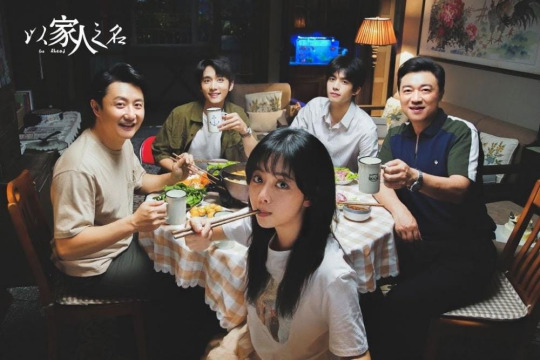
Go Ahead as an example of nurturing fathers.
Breast cancer - the husband was asked instead of the wife, in a matter about her body.
The entrepreneurial mindset of Asian women
It's hard to identify with the women in Blue Eye Samurai, since the women in my life aren't nearly as submissive and oppressed as shown in the show. So here's some examples of Asian women's agency.
In Japan, there's a tradition known as Husband Allowance (Kozukai, 小遣い). Every month, the husband will hand over their salaries to their wives, who in return will hand out an allowance to him, which he can spend on booze and cigarettes among other things. Here it is the women who handles the finances. And it's not uncommon to see Asian women spend this kind of money to open up their own family businesses from their own homes, which they handle while their husbands go to work for strangers.


The parents of a family friend of mine used to send money back home to her grandmother, so that she could use it as living expenses. However, her grandmother instead saved up this money and spent it to open up and run a boarding house as a landlady, similar to Rumiko Takahashi's Maison Ikkoku (1980-87). That said, my friend's parents felt betrayed once they figured out that's what she spent the money on, and wanted to decrease the amount they usually sent her, however my father tried to convince them to let her continue her business.
Another example from my own life is this lady whose father and husband were shot and killed during World War II, leaving her with over ten children in a foreign land. Yet despite this, she managed to work herself up into becoming the matriarch of an expanding hotel business, which her children took the reins of once she passed. She is perhaps the wealthiest person I've ever visited, and I still wonder how she did it.


Another example of this entrepreneurial mindset can be seen in the Chinese drama A Dream of Splendor (2022), featuring three women starting and running a popular tea shop in the capital of the Northern Song Dynasty. Here it is the protagonist, Zhao Pan'er, who financially supports her boyfriend for three years, while he struggles to pass the imperial exam.
You can watch A Dream of Splendor for free on the official WeTV Youtube account: Here's episode 1. Speaking of entrepreneurial women, I came across this interesting article that mentioned the Caizi Jiaren genre, which both Maison Ikkoku and A Dream of Splendor might fit: The Subtle Sinophilia of Maison Ikkoku.
Sexualization and Fetishization of Asian women


Mixed gender bathing, Kusatsu Onsen

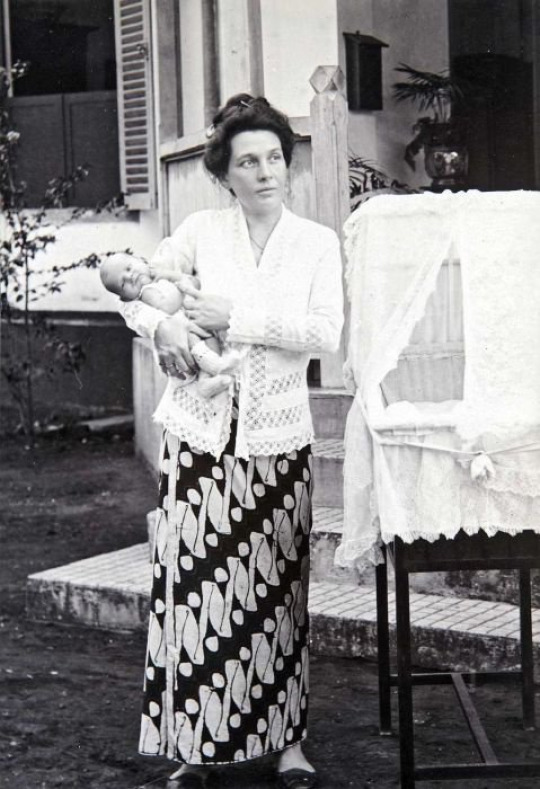
Kebaya and batik sarong - attitudes towards nudity, influences and soft power from the West (Americanization / coca-colonization). Decolonising power (Ansari).
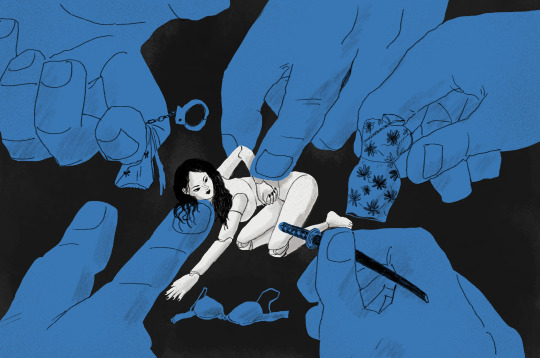
"Why dating as an Asian-American woman can mean hyper-sexualisation and fetishisation, reducing people to objects" (Objectification, Western/Eurocentric oppression).
Kawanoji (Sleeping like a river), waking up with the family, when a child sleeps protectively between their parents, in contrast to the West where the child will be removed and placed in its own bedroom to sleep independently as soon as possible. A guy in my class claimed people who sleep in the same bed as their parents were retards, when doing so is common in several Asian countries.
Massages viewed as something sexual/horny in the West, in contrast to an act of service you do for family members and elderly people you care about. Attitudes around seniority and speaking up against authority (filial piety).
The Feminist movement for Asians
The Me Too movement


The Western suffragette movement of the Western world. Suffragette Emily Davison throws herself under the King's horse at Epsom in a horse riding competition, and died 4 days after the incident.
Anti-suffragette cartoons and propaganda. Misogyny and cruelty.
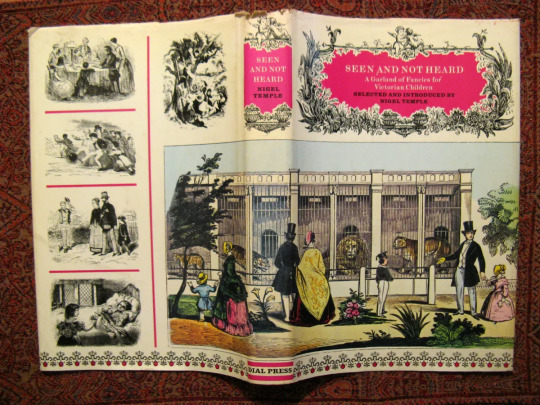
Women are just larger children; Both are meant to be seen but not heard, according to the Victorians. Legacy/inheritance of the Enlightenment period. Divorce and women's rights before the Enlightenment. Artemisia Gentilleschi, the women painter whose work was attributed to her male counterparts for a long time.
Stay at home mother vs career woman. Omiai and the marriage market, impromptu markets popping up in Chinese parks. Birth rate decline.
Gender roles in Genderbender
Kaze Hikaru
Ryou
Gender fluidity has been the norm throughout most of history. Torikaebaya Monogatari, where a brother and sister in the Heian period is gender mixed at birth, to fulfil gender roles they're more "suited" for according to societal expectations. Another Heian period text about a guy who crossdresses as a woman to get close to a woman he has a crush on.
Acolyte stories of love between buddhist monks and their chigo were popular. Also Wakashudō. Pederasty in Ancient Greco-Roman world. Rumors of pederasty between Julius Caesar and Augustus/Octavian.
#blog#feminism#gender fluidity#suffragette#orientalism#decolonisation#Asian experience#Third Culture Kid
5 notes
·
View notes
Text
how do trolls work…..like genuinely
#if ya can’t tell this is a trolls movie post#I’m just wondering how their aging works#how long it takes in the egg#where the egg even comes from#if theirs a specific gender rule or if it’s just random or chosen#how long the egg is kept inside before being realeased through the hair#what specific traditions and differences do they have between each other and us#how does their anatomy work#how do hey make baby trolls to begin with#do they actually have sex or is it some sort of magical bonding thing and does it have to be on porpose or can it b#e on accident#can they even have sex#what is the logic behind their hair#like I’m wondering how that works too#how important is their music like we know it’s a part of their culture and livelyhood but I wonder if they#ll expand on how important music is to them in the third one#…..oh god#….DO TROLLS HAVE PUBERTY!?#AND IF SO…..HOW!!#and if not….also how??#idk I’ve just got so many questions I can’t wait to brain storm bout#my stuffy stuff#trolls#my thoughts
2 notes
·
View notes
Note
Wip files tag game: I’m so curious about what Akolla is 👀 -stuffaboutwriting
Ahhh thank you I'm so glad someone asked! Akolla is a person, as are Talil and Tlapil. They're all part of a 1,000-year fantasy history I'm building surrounding the kingdom of Halara. Specifically, there will be 10 books, focusing on different generations of the royal family.
Akolla is the focus of the second book, the fourth royal generation after Talil the war hero united them as one kingdom. Akolla is an only child and the first royal generation to be somewhat isolated from the general population, though he doesn't live in an actual castle until he becomes Kelesh (the Halaran word for ruler).
I'm not going to tell you everything about Akolla because that won't be all that interesting out of context. What I am going to tell you is about their gender system, because it's my favorite part. Halaran only has one pronoun for all people, vi, but I use different pronouns to differentiate in English. Their gender system is fun and complex, so have an organized list:
Children don't have a gender at all. They all wear tunics and leggings and grow their hair long (well, everyone grows their hair long but adults cover it). They choose their gender when they reach the age of apprenticeship at 14. There's a big ceremony and everything. At that point they start wearing gendered adult clothes and hair coverings--almost all adults wear some sort of headscarves.
With 6 different gender options, gender (mostly) is not based on physicality but on what you prioritize in life, what you want to project to the world, and which deity you feel most represents your self.
Gendered clothing is traditional but not completely fixed--the headscarf style is near-universal and can be the only way to read gender. But also, one can't always be sure. That doesn't matter as much when you don't need to know what pronoun to use for someone, and asking can start interesting conversations.
Ku is the gender associated with the sun deity, with warmth and farming and protection and life. They wear skirts and loose shirts and headscarves in a style similar to a tichel. I use eso/eson pronouns in translation
Aig is the gender associated with the river deity, with strength and leadership and hardiness and endurance. They wear pants and loose shirts and headscarves in a style similar to a turban. I use be/bel pronouns for them.
Dakal is the gender associated with the wilderness deity, with athletics, freedom, cunning, and bravery. They wear long robes and headscarves similar to a flowy hijab style. I use zie/zir for them.
Zjigol is a gender associated with the deity of craftsmanship, associated with art, creativity, entertainment, puzzles, and beauty. They wear wrap-around skirts and either no shirt or a shawl depending on weather and their own preferences. Their headscarves are worn tied at the base of the skull with a tail down their back or over their shoulder. I was running out of options by this point and I'm really not sure what they're called. I use ne/nem pronouns for them.
Kenba is a gender associated with the deity of change, with seasons, adventure, relationships, and politics. They wear single-piece jumpsuits with varying levels of tight or loose fitting legs depending on the current style. Their headscarves are tied tight across their hair with a knot above their forehead. I use kri/krun for them.
Yo'em are different. Traditionally, originally, one was considered a holy and blessed child if they were born with different physical traits. This includes noticeable intersex traits, those that appear at birth or at puberty, as well as other unusual ways to be born, missing or with differently shaped limbs, etc. Initially, they had no choice in the matter and were often sent to become priests (although others could be as well). They were thought to be good omens. In later years, their options expanded and they were given more choice. Eventually, some began to choose their own gender while others redefined what being yo'em meant to them. They wear tunics and leggings, but in a much more adult style than children's, and no headscarf, leaving their hair loose. I use the Halaran pronoun vi for them because I'd run out by then.
#I am still working on tweaking the details for sensitivity and coherence and such#but I'm also very proud of how I built their culture and language around this#the other kingdoms surrounding them have different systems#Eng is very binary#Aled has a third gender much like many real cultures#Nita is binary but much more accepting of being trans or enby#like an idealized modern western society#Moshke writes#Halara#ask game#thanks for the ask!#Writeblr
5 notes
·
View notes